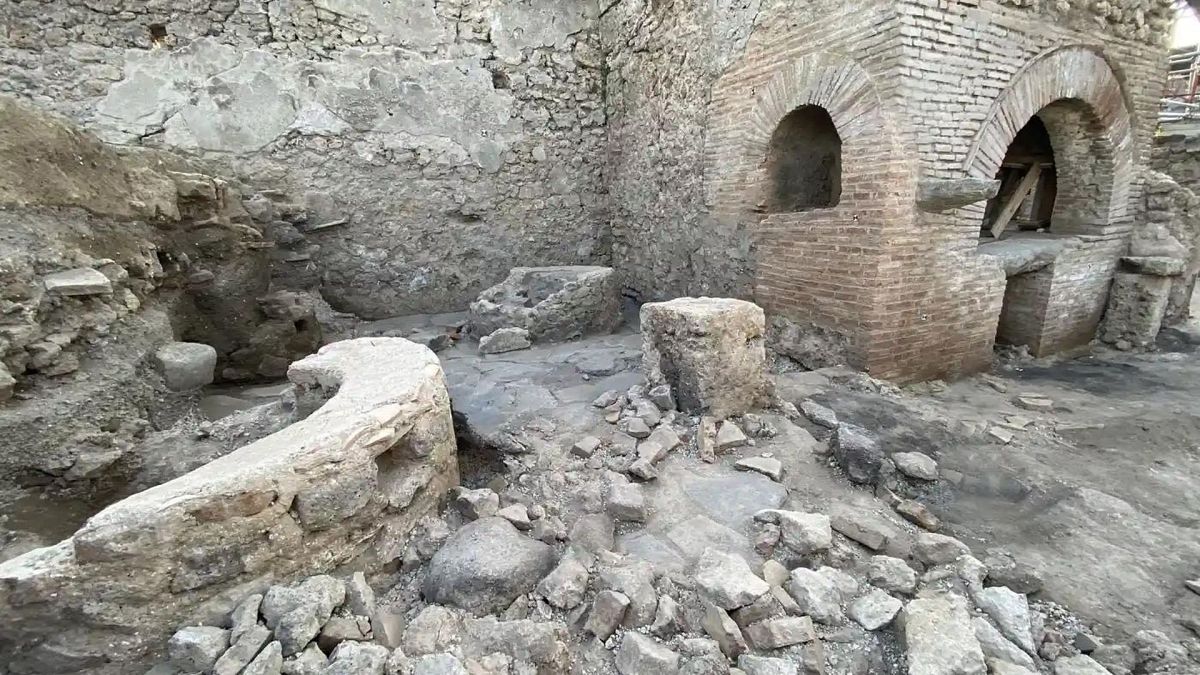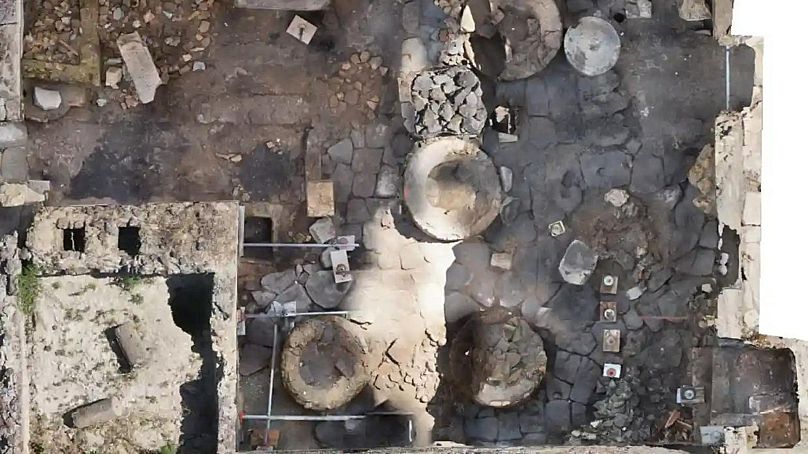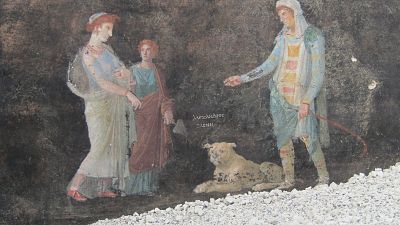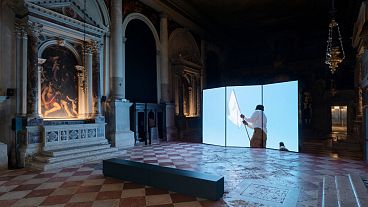The finding aligns with the harrowing accounts of second-century AD writer Apuleius, whose Metamorphoses IX 11-13 describes the backbreaking labour endured by men, women, and animals in ancient mills and bakeries.
Archaeologists working on the ongoing excavations in Region IX, Insula 10, near the slopes of the ancient city of Pompeii, have uncovered a disturbing site - a bakery-prison where enslaved workers and blind-folded donkeys were confined and exploited to produce bread.
The cramped workspace, equipped with small windows high in the walls secured by iron bars, was revealed during the broader project aimed at securing and consolidating the unexcavated areas of Pompeii.
It is presumed that the residence containing the bakery was in the process of being renovated when the eruption of Mount Vesuvius in AD79 led to its destruction.
However, the discovery of three victims in one of the bakery's rooms in recent months suggests that the property still housed individuals at the time of the eruption.
The horrors of backbreaking labour in ancient Pompeii mills
Void of doors and any outside communication, the production area only had an exit leading to the house's atrium, restricting the movement of individuals within.
"It is, in other words, a space in which we have to imagine the presence of people of servile status whose freedom of movement the owner felt the need to restrict," notes Gabriel Zuchtriegel, the director of the Archaeological Park of Pompeii, in a co-authored article published today in E-Journal of the Pompeii excavations.
He adds: "It is the most shocking side of ancient slavery, the one devoid of both trusting relationships and promises of manumission, where we were reduced to brute violence, an impression that is entirely confirmed by the securing of the few windows with iron bars."
Adjacent to the stable, the milling area displayed semicircular indentations in volcanic basalt paving slabs, possibly deliberate carvings to coordinate the movement of the animals and to prevent them from slipping and forming a "circular furrow," as described by second-century AD writer Apuleius.
The wear on these indentations suggested the synchronised cycles carried out around the millstones, akin to the gears of a clockwork mechanism.
The grim reality of daily life in this space complements the narrative presented in the upcoming exhibition, "The Other Pompeii: Ordinary Lives in the Shadow of Vesuvius," opening on 15 December at the Palestra Grande in Pompeii.
The exhibition sheds light on the forgotten individuals, such as slaves, who, though often overlooked by historical sources, constituted the majority of the population, significantly contributing to the economy, culture, and social fabric of Roman civilisation.




